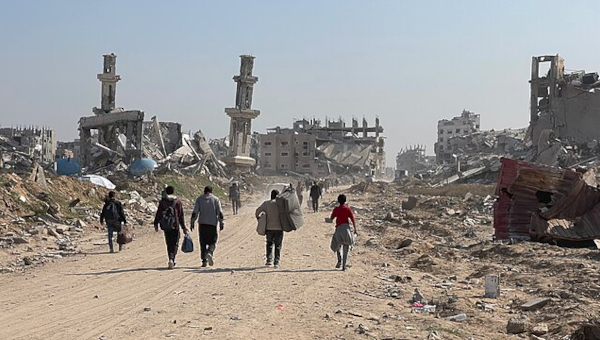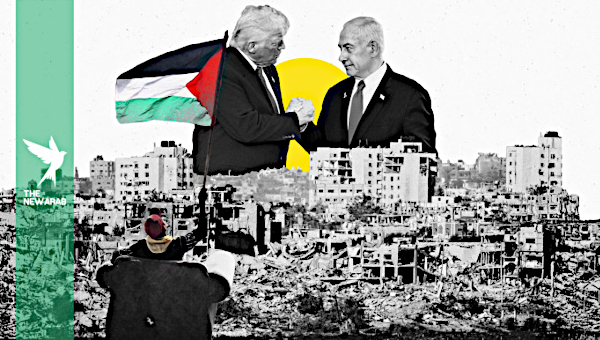The Unraveling Occupation
The U.S. war and occupation of Afghanistan was supposed to bring stability and democracy. Instead, Afghanistan remains a country on the brink of disaster – one that has clearly been exacerbated by the U.S. presence. More than 10 years after the U.S. war began, in spite of the presence of about 2,000 international aid groups, at least $3.5-billion in humanitarian funds and $58-billion in development assistance, humanitarian conditions in Afghanistan remain abysmal.

This past winter, one of the harshest in recent years, compounded the suffering of those living in refugee camps – an estimated 35,000 people just in the capital of Kabul, and many more around the country. The camps, according to the New York Times, are euphemistically referred to as “informal settlements,” because labeling them as what they really are, camps full of war refugees, is “politically sensitive.” According to the Times, “The Afghan government insists that the residents should and could return to their original homes; the residents say it is too dangerous for them to do so.”
The death rate for children under age five in these camps is 144 out of 1,000, according to Julie Bara of Solidarités International. The Times calls this “stunningly high even for Afghanistan, which already has the world’s third highest infant mortality rate.”
What is the Strategy?
As Mohammad Yousef, director general of Aschiana, an Afghan aid group that provides education and other services in 13 of the camps, told the Times, “There is no clear strategy to help these people. They don’t have access to anything – health, education, food, sanitation, water. They don’t even have an opportunity for survival.” Such a bleak picture of humanitarian conditions should give pause to anyone who might still believe that the U.S. could be a force for good in Afghanistan.
But it isn’t only the dire conditions in the refugee camps. By any measure, even those of the occupiers, the U.S. war and occupation has been a dismal failure – failing to liberate women, failing to improve conditions for ordinary Afghans, failing to bring about democracy, failing to stop the killing of civilians, failing to permanently oust the Taliban, failing to train a national armed forces.
Of course, that’s because the U.S. occupation was never about liberation and democracy in the first place. It was about securing an imperial foothold in the region – no matter the consequence to the Afghan people. Now, as the U.S. occupation unravels, it is ordinary Afghans who are suffering the consequences as the U.S. looks in vain for a “Plan B” that doesn’t exist.
Take women’s rights. Although the 2001 war was accompanied by relentless propaganda from both Democrats and Republicans telling us that the U.S. had to go to war in order to ‘save’ Afghan women from repressive fundamentalism, reports today suggest that little has changed.
According to the Guardian, half of all Afghan women in prison – some 400 – are there for “moral” crimes – including running away from abusive homes. Others have been imprisoned for the “crime” of sex outside of marriage – after being raped or forced into prostitution.
A report from last fall Oxfam found that 87 per cent of Afghan women reported experiencing physical, psychological or sexual abuse or forced marriages.
The U.S.-backed stooge President Hamid Karzai, whose government is notorious for its corruption and its lack of legitimacy outside Kabul, recently backed a decree by the Ulema Council, a government-sponsored group of religious leaders, insisting that women are worth less than men, should be subordinate to men, should not mix with men in school or the workplace, and should always travel with a male guardian.
Karzai backed the decree as part of a plan to appeal to conservative forces and the Taliban – which his government is currently negotiating with as the date approaches for a planned September withdrawal of some 30,000 U.S. troops. This would bring the number of U.S. forces in Afghanistan down from approximately 90,000 to 60,000 – a necessary move for the Obama administration prior to the November election.
Whatever else is taking place, it’s clear that even empty rhetoric about women’s rights is being ditched. “There is a link with what is happening all over the country with peace talks and the restrictions they want to put on women’s rights,” Fawzia Koofi, a member of Afghanistan’s parliament, told the Guardian, adding that the decree is a “green light for Talibanization.”
Karzai – along with the U.S. – is desperate to cut whatever deals he can with the Taliban and other forces now, because his isolated and weak government would have a hard time remaining in power once the U.S. presence is wound down.
Nor has the U.S. been able to train a stable Afghan army – at least not with any confidence that its soldiers will remain loyal to U.S. interests or to Karzai and the central government. The Obama administration is counting on the perception that its troop ‘surge’ brought internal security and stability to large areas of the country, even though that’s clearly not the case. In fact, the U.S. and its NATO partners in the Afghanistan occupation don’t trust the soldiers that they do recruit and train.
In many places outside Kabul, the Taliban and other warlords are in total control of local militias. In Ghor province in the West, for example, more than 150 illegally armed groups are estimated to contend for power in the area – against some 200 NATO soldiers. According to one report last month:
“Governor Abdullah Hiwad recently told media that President Hamid Karzai had agreed to raising and deploying an additional 1,000-member militia to the province. He said the president had promised completing the process this solar year. However, provincial council members and officials believe militias cause unrest and fuel insecurity instead of bringing relief to the people.”
U.S. Atrocities
On top of this local instability is the widespread outrage caused by repeated insults and massacres at the hands of U.S. troops.
Recent months have seen mass protests in Afghanistan over photos showing U.S. Marines urinating on the corpses of “insurgents,” the burning of Korans at a U.S. military base in February and, last month, the massacre of 17 unarmed civilians by Staff Sgt. Robert Bales. The atrocities committed by Bales didn’t provoke the immediate and furious protests seen during the Koran burning, but they have built on an even deeper sense of distrust of American and NATO forces by ordinary Afghans.
U.S. commanders are well aware that their own troops are a barely contained powder keg. According to journalist Robert Fisk, just three weeks before Bales carried out his massacre – after the death of six NATO troops, two of them Americans, in the wake of the protests against the Koran burning – the U.S. Army’s top commander in Afghanistan, Gen. John Allen, lectured his men, “Now is not the time for revenge for the deaths.”
According to Fisk, Allen told soldiers that they should “resist whatever urge they might have to strike back” after an Afghan soldier killed the two Americans. “There will be moments like this, when your emotions are governed by anger and a desire to strike back,” Allen continued. “Now is not the time for revenge, now is the time to look deep inside your souls, remember your mission, remember your discipline, remember who you are.”
As Fisk wrote:
“[T]his was an extraordinary plea to come from the U.S. commander in Afghanistan. The top general had to tell his supposedly well-disciplined, elite, professional army not to ‘take vengeance’ on the Afghans they are supposed to be helping/protecting/nurturing/training, etc. He had to tell his soldiers not to commit murder.
“I know that generals would say this kind of thing in Vietnam. But Afghanistan? Has it come to this? I rather fear it has. Because – however much I dislike generals – I’ve met quite a number of them and, by and large, they have a pretty good idea of what’s going on in the ranks. And I suspect that Allen had already been warned by his junior officers that his soldiers had been enraged by the killings that followed the Koran burnings – and might decide to go on a revenge spree.”
One of the things that made the Bales massacre particularly appalling was that the U.S. had specifically told civilians in the area who had previously fled the fighting to come back to their villages – that it was “safe,” and there was no longer a threat from the Taliban.
Following the massacre, the U.S. military was so worried about the anger it could spark that, within days, it paid the families of the victims $50,000 for each murdered civilian – as opposed to the several hundred or few thousand dollars that has been routine during the war. But payoffs won’t bring dead civilians back to life – nor will they make the resentment that fuels opposition to the U.S. and NATO war go away.
As one anonymous Afghan official told ABC News, “The villagers aren’t like animals that you can buy. Yes, it’s a lot of money. But their children are not coming back.”
Adding to that resentment is the fact that the U.S. immediately whisked Bales out of the country following his murder spree – preventing Afghan officials or courts from having any role in investigating the crime or seeking justice for the victims’ families. This comes on top of the February Koran burnings, which sparked days of mass protests around the country.
The Afghan Army
During the protests, Afghan soldiers – not “insurgents” – killed six occupying troops. Two were found dead with shots to the back of the head inside the Interior Ministry headquarters in Kabul. These two killings, at least, were certainly carried out by a person or persons that the U.S. had trained as part of the Afghan security forces, and who therefore had access to U.S. soldiers and a U.S. base.
In late March, following the Bales massacre, Afghan forces reportedly shot and killed three NATO soldiers. Reports suggest the person who carried out the attack had been in the Afghan army for four years – another sign that U.S.-trained soldiers are taking aim at the occupiers.
Also in late March, the Afghan defense ministry was forced to go on lockdown after discovering 10 “suicide bomb vests.” More than a dozen Afghan soldiers were arrested on suspicion of plotting to attack the ministry and blow up commuter buses for government employees. As the New York Times noted, “The security breach took place in one of the most heavily fortified parts of Kabul, less than a mile from the presidential palace and the headquarters of the American-led coalition.”
These are just a few of the recent attacks in which Afghan forces are suspected to have attempted to turn their weapons on U.S. and NATO occupiers.
According to the Associated Press, since 2007, an estimated 80 NATO service members have been killed by Afghan security forces. More than 75 per cent of those attacks have actually occurred in the past two years, and they’re happening right in front of, and even on, military bases. Almost one in five of the NATO soldiers killed so far this year in Afghanistan, have been shot and killed by Afghan soldiers and policemen, or militants disguised in their uniforms.
For U.S. leaders, such attacks are particularly worrisome – because they expose the idea that a loyal Afghan army will soon be ready to take over security of the country.
“As Carl Bildt, the Swedish foreign minister, said recently, if the U.S. stops funding the Afghan army after its planned withdrawal of combat troops in 2014, ‘We will have given 100,000 people training and a gun, and then made them unemployed.’”
The U.S. currently spends some $9-billion a year to fund and train the Afghan army. As Carl Bildt, the Swedish foreign minister, said recently, if the U.S. stops funding the Afghan army after its planned withdrawal of combat troops in 2014, “We will have given 100,000 people training and a gun, and then made them unemployed.”
The Taliban
All of this complicates the Obama administration’s timeline for withdrawal. While Karzai remains largely a figurehead, the U.S. continues to rely on his administration to broker a deal with the Taliban in order to set the stage for the September drawdown of troops and, ultimately, the planned withdrawal of all combat troops by 2014.
Following the Bales massacre, the Taliban withdrew from talks – leaving the Karzai government and the U.S. scrambling now to figure out how to get them back to the table.
Within the U.S., this latest atrocities and tragedies have had a clear impact on people’s attitude toward the war. According to a New York Times/CBS News poll taken after the Bales massacre, in the last four months, American opposition to continuing the war in Afghanistan has climbed from 53 per cent to 69 per cent of the population. Some 60 per cent of Republicans and 68 per cent of Democrats now agree that the war is going badly. Defense Secretary Leon Panetta immediately dismissed the poll, stating, “We cannot fight wars by polls. If we do that, we’re in deep trouble.”
But the Obama administration is already in “deep trouble” when it comes to the quagmire in Afghanistan. It has no strategy except its hope to cut whatever deal it can with the Taliban, maintain the six U.S. military bases across the country, keep Karzai as a nominal figure in Kabul, and continue the drone war.
The Republicans, of course, don’t have an alternate strategy. Mitt Romney has been critical of Obama’s “withdrawal timetable,” but all his campaign website says is that as president, he would “order a full interagency assessment of our military and assistance presence in Afghanistan.”
As Sonali Kolhatkar of the Afghan Women’s Mission recently explained in an interview with the Real News Network:
“[W]hat Afghans, ordinary Afghans have been subjected to over the past 10 years has been they get targeted from three different sides. You have the U.S. and NATO occupation on the one hand, which is conducting these night raids and killing civilians, the likes of which we just saw. And then you have the Taliban, who are only stronger because of the U.S. presence, because they have a great excuse to remain in Afghanistan. And then you have the U.S.-backed central government in Afghanistan, which is riddled with very corrupt and criminal warlords.”
After 10 years, it’s long past time for ordinary Afghans to be able to decide their own fate – without the interference of the U.S. and NATO. As long as the U.S. military remains, Afghanistan cannot be free. •
This article first appeared at Socialist Worker.





